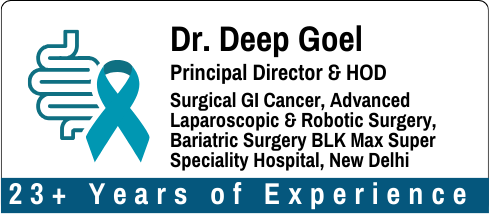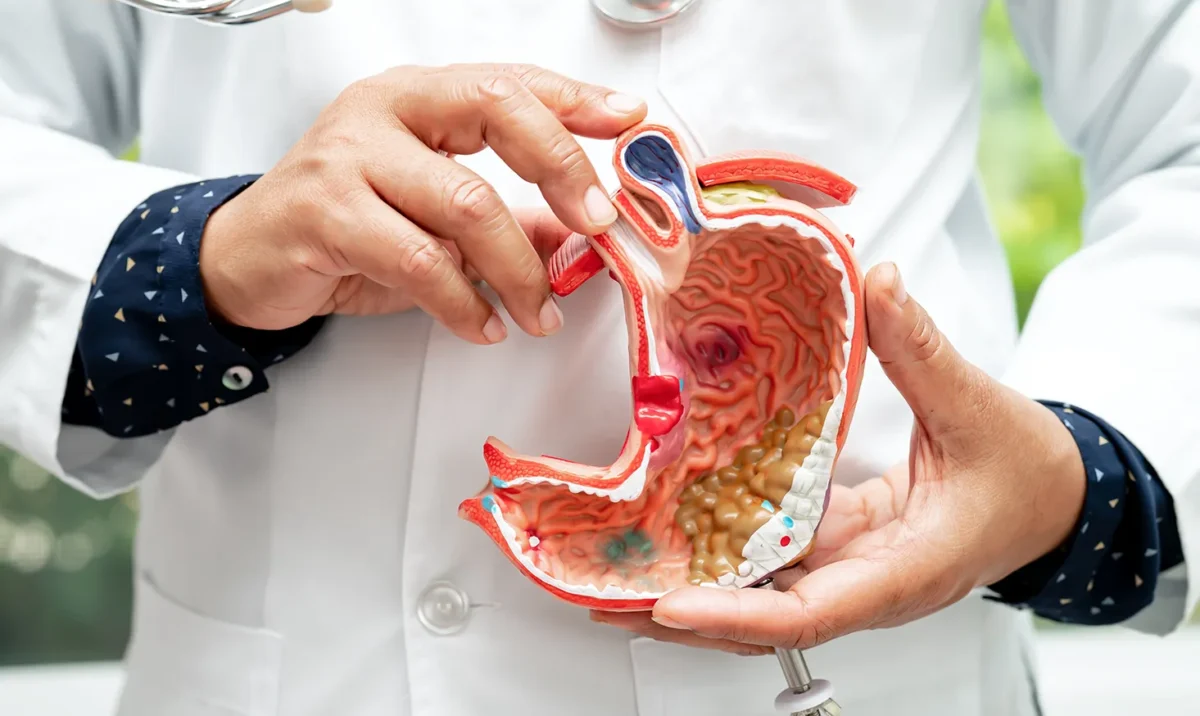Many people experience frequent acid reflux, heartburn, or GERD and think of them as minor problems. However, if these symptoms persist and recur, they may indicate a more serious underlying issue. In rare cases, ongoing digestive issues might be a sign of a tumour in the pancreas, bile duct, or even early oesophageal cancer.
That’s where the Whipple procedure comes in. It’s a major surgery that can save lives by removing cancer or damaged parts of the digestive system. It might sound scary at first, but knowing how it works—and how problems like long-term acid reflux can be linked—can help you feel more prepared.
In this blog, we’ll explain the Whipple procedure in simple terms: why it’s done, who needs it, how it connects to digestive issues, and what recovery looks like. Whether you’re going through this yourself or helping someone else, this guide will give you the clarity you need.
What is a Whipple Procedure?
The Whipple procedure is a major surgical operation that involves the removal of the head of the pancreas, part of the small intestine (duodenum), the gallbladder, and the bile duct. In some cases, a portion of the stomach may also be removed.
This procedure is primarily used to treat cancers and tumours located in the pancreas and nearby organs. After removing the affected organs or tissues, the surgeon reconnects the remaining organs so that digestion can continue as normally as possible.
When Is Whipple Surgery Needed?
Whipple surgery is typically recommended in the following situations:
1. Pancreatic Cancer
The most common indication is Whipple surgery for pancreatic cancer, mainly when the tumour is located in the head of the pancreas. If the cancer is detected early and hasn’t spread beyond the pancreas, the Whipple procedure can significantly improve survival chances.
2. Ampullary Cancer
This cancer occurs where the bile duct and pancreatic duct meet and empty into the small intestine. The Whipple operation can effectively remove this region and nearby tissues to stop the spread.
3. Chronic Pancreatitis
In some severe cases of chronic inflammation of the pancreas that do not respond to medications or less invasive treatments, the Whipple procedure may be considered to reduce pain and complications.
4. Neuroendocrine Tumours
Non-cancerous but potentially dangerous growths in the pancreas may also necessitate surgery to prevent future complications.
5. Bile Duct Cancer or Trauma
If the bile duct is affected by cancer or traumatic injury, and the nearby organs are involved, this surgery can help restore functionality.
Dr. Deep Goel states, “Pancreatic and periampullary cancers often go undetected until late. At our centre, we emphasise early detection and timely surgical intervention like the Whipple procedure to give patients the best survival outcomes.”
How Is the Whipple Procedure Performed?
This is a highly complex and time-intensive surgery, usually lasting 5–8 hours. It is performed by a surgical oncologist or hepatopancreatobiliary (HPB) surgeon with specialised expertise.
There are three main types of Whipple procedures:
- Traditional (Open) Surgery: The surgeon makes a large incision in the abdomen.
- Laparoscopic (Minimally Invasive): Small incisions with a camera-guided tool.
- Robotic-Assisted Surgery: A more advanced minimally invasive approach with high precision.
Steps Involved:
- Removal of the pancreas head, duodenum, bile duct, gallbladder, and sometimes part of the stomach.
- Reconstruction by connecting the remaining pancreas, bile duct, and stomach to the small intestine to ensure normal digestion.
Dr. Deep Goel adds, “Whipple surgery demands surgical precision due to the complex anatomy involved. Our focus is on achieving a cancer-free margin while preserving maximum organ function. That’s the key to a successful long-term outcome.”
What to Expect After Whipple Surgery?
1. Hospital Stay
Patients typically stay in the hospital for 7 to 14 days. During this period:
- Pain is managed through IV medications.
- A feeding tube may be placed temporarily.
- Regular monitoring ensures that there are no signs of infection or leakage from surgical connections.
2. Immediate Recovery
The first few days post-surgery are critical. Patients are slowly transitioned from liquid diets to soft foods. Movement is encouraged to prevent blood clots.
3. Long-Term Recovery
Full recovery from the Whipple procedure may take anywhere from 6 weeks to 6 months, depending on factors such as age, overall health, and the presence of any post-operative complications.
Whipple Procedure Recovery: Tips for a Smooth Healing Process
Recovery requires both patience and close medical follow-up. Here are some key recommendations:
a) Nutritional Adjustments
- Patients may struggle to digest fats or certain types of food.
- Small, frequent meals rich in protein and low in fat are advised.
- Pancreatic enzyme supplements may be needed to aid digestion.
b) Monitoring Blood Sugar
The pancreas also regulates insulin. After Whipple surgery, some patients may experience changes in blood sugar levels or develop diabetes temporarily or permanently.
c) Physical Activity
Light physical activity, such as walking, can help reduce the risk of complications like pneumonia or deep vein thrombosis (DVT).
d) Emotional Support
The physical and emotional toll can be significant. Professional counselling and patient support groups help patients and families cope during this transition.
A patient of Dr. Goel stated, “I was diagnosed with a tumour in the head of the pancreas after months of acid reflux and unexplained weight loss. I was referred to Dr. Deep Goel, and he performed the Whipple surgery successfully, and I was walking by day 3. It’s been 9 months now, and I’m cancer-free, living normally.”
Whipple Operation Success Rate
The Whipple operation’s success rate has improved significantly due to advances in surgical techniques and post-operative care.
- Hospital Volume Matters: Patients treated at high-volume cancer centres tend to have better outcomes due to the expertise of experienced surgical teams.
- Survival Rates: For early-stage pancreatic cancer, the 5-year survival rate after successful Whipple surgery can range from 20% to 25%, compared to just 1–3% without surgery.
- Post-Surgical Quality of Life: Many patients are able to return to a near-normal life with a proper diet, medications, and regular monitoring.
Whipple Surgery Cost in India
India has become a preferred destination for patients worldwide seeking advanced cancer surgeries at a fraction of the cost in Western countries.
The Average Cost of Whipple Surgery in India ranges from ₹3,50,000 to ₹6,50,000 in top hospitals. The various key factors that affect cost include the type of hospital, the use of technique, the length of hospital stay, and post-surgical complications, among others.
Patients benefit from high-quality treatment, experienced surgeons, and cost-effective packages, making India a preferred choice for Whipple surgery.
Another patient who travelled from Dubai to India shared, “I flew to India after my doctors found a suspicious mass near my bile duct. Dr. Deep Goel explained everything about the Whipple surgery in detail. The operation went smoothly, and the international patient team made the entire experience stress-free. I am now back in Dubai, feeling stronger every day.”
Risks and Complications Associated With Whipple Procedure
Like any major surgery, especially one involving multiple organ systems, the Whipple procedure comes with potential risks:
Immediate Risks:
- Bleeding
- Infection
- Leakage at the surgical connections
- Delayed gastric emptying
- Blood clots
Long-Term Risks:
- Nutritional deficiencies
- Weight loss
- Pancreatic insufficiency
- Onset of diabetes
- Bile reflux
Life After the Whipple Procedure
Patients who successfully undergo Whipple surgery often describe it as a turning point in their cancer journey. Although lifestyle changes are inevitable, they can lead to a productive, fulfilling life with the proper care plan.
Follow-up Schedule:
- Frequent doctor visits in the first year (monthly or quarterly)
- Routine CT scans, blood work, and tumour marker tests
- Monitoring for cancer recurrence or new symptoms
Lifestyle Adjustments:
- Healthy, nutrient-rich diet
- Avoiding alcohol and smoking
- Stress management and moderate exercise
Dr. Deep Goel shares, “We believe in empowering our patients. Before surgery, every individual and their family are educated about the Whipple procedure, its risks, recovery, and lifestyle changes. Informed patients recover better; they become active participants in their healing.”
Final Thoughts
Understanding what a Whipple procedure is is the first step toward making informed treatment decisions. While the surgery is complex and recovery can be lengthy, it remains the best surgical option for patients with pancreatic cancer and tumours in the region.
Whether you’re considering Whipple surgery for pancreatic cancer or you’re a caregiver trying to navigate treatment options, this guide gives you a clear roadmap of what to expect before, during, and after the procedure.
India remains a trusted hub for advanced surgical care, offering affordability, skilled surgeons, and a robust cancer care infrastructure, making Whipple surgery in India a compelling choice for many patients worldwide.
FAQs
1. Can I live a normal life after Whipple surgery?
Yes. With proper recovery, medications, and follow-up, many patients return to daily activities and enjoy a good quality of life.
2. How soon can I walk after Whipple surgery?
With help, most patients are encouraged to sit up and walk short distances within 1–2 days post-surgery to aid recovery.
3. Will I need chemotherapy or radiation after the Whipple procedure?
Yes, in many cases, especially with cancer, adjuvant therapy (chemo or radiation) is recommended post-surgery to reduce recurrence risk.
4. Can Whipple surgery be done laparoscopically or robotically?
Yes, minimally invasive and robotic-assisted Whipple procedures are available at leading centres, though not all patients are eligible based on tumour location and stage.
5. Can I drive or travel after Whipple surgery?
You should avoid driving for at least 4–6 weeks or until your doctor clears you. Short-distance travel may be allowed during recovery, but long-distance or international travel requires medical clearance.
Explore more blogs: How Effective Is Surgery in Treating Pancreatic Cancer?






